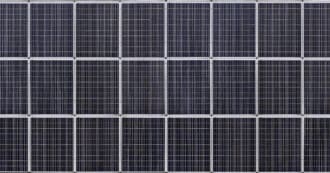By Sydney Cohen – In physics, energy is a quantity providing the ability to create or supply heat. Energy is transferable into different locations or objects, but it cannot be derived or destroyed.
For example, when heating a home, the furnace burning fire transforms its chemical potential energy into thermal energy which is transmitted to the air to raise its temperature.
“In recent years, considerable attention has been devoted to certain direct energy-conversion devices, notably solar cells and fuel cells, that bypass the intermediate step of conversion to heat energy in electrical power generation.”
Continue reading to learn about energy transformation, and what we can to do reduce our environmental impact when using energy!
Energy Transformations
Over the past couple of centuries, energy production has fueled industrialization. It has transformed the way people live their lives and worked, but it also created waste products that are not environmentally friendly.
The burning of fossil fuels for electricity generation and transformation has led to air pollution, greenhouse gases, acid rain, ozone depletion, and global warming. Pollutants damage ecosystems on land and in bodies of water by killing wildlife or disturbing food chains.
The search for sustainable forms of energy is one solution to this problem. So called ‘clean energy’ like solar and wind produces fewer negative byproducts when used to produce power for human use.
What is Energy Transformation?
The Law of Conservation of Energy claims that energy cannot be created nor destroyed. Why do handheld PC gaming systems always run out of energy? There are various types of energy which include: kinetic energy, potential energy, and mechanical energy.
Kinetic energy is energy that is used by objects during movement. Potential is the energy that is stored, based on a situation or state of being of an object or thing. Electrical energy from a power outlet provides the thermal energy needed for making toast or heating a home.
Electrical Energy and Kinetic Energy
Electrical and kinetic energy are two different forms of energy. They both have many similarities, but they differ in one very important way: electrical energy is created by the movement of electrons that flow through a conductor such as copper wire, while kinetic energy is generated from the motion of an object which has mass.
Types of Energy Transformations
Often a result of energy transformation is thermal energy. Thermal energy is commonly a byproduct of other energy transformations. It is typically absorbed by other objects in the system or absorbed into the atmosphere.
When you use chemical energy to generate kinetic movement during exercise, you feel warm, because you created thermal energy. Thermal energy is produced through certain chemical reactions that form or crack chemical bonds.
When electrical energy fuels a light bulb, this light bulb emits thermal energy.
How is Kinetic Energy Used Daily?
Moving air has kinetic energy and it is used to propel windmills and sailboats for fuel. A bullet from a gun uses kinetic energy which penetrates into targets. Remember, kinetic energy is energy resulting from motion.
Energy Conversion: Transfer and Transformation
Energy transfer involves the transport of energy from one place to another. For example, electricity is transferred via a plug or charger into a battery device.
Energy transformation is where the energy is changed from one form to another – like with a hydroelectric dam that converts heat to electricity. Although energy can be transferred or transformed, the overall amount of energy doesn’t change. This is called energy conservation.
Examples of Energy Transformation
Electric power systems, electrical and electronic systems that fuel cell batteries, electricity, other electric batteries, fire energy, chemical energy, and electrical and mechanical energy, are all forms of energy transformation.
The sun converts nuclear energy to heat and light. Via photosynthesis, plants transform solar energy produced by the sun into chemical energy.
Energy Transformation in Our Body
Our body converts the chemical energy of food into kinetic energy that is used when moving. An electric fan converts electrical energy to kinetic energy. The transformation of energy is happening everywhere.
Energy Transformation and Religion
Ken McLeod discusses in What to Do When Energy Runs Wild how “when you practice meditation, or any discipline that requires attention, you inevitably transform energy.” Religions can help us tap into a spiritual reality, whether through prayer, meditation or other spiritual practices.
Ken McLeod explains this process more deeply: “To be a little technical, when the level of energy in the attention is higher than the level of energy in what you are experiencing, say, anger or love, then you can experience the anger or love without getting lost in it. When you experience it that way, energy is transformed to a still higher level, making it possible for you to experience deeper levels of clarity and stillness, and also deeper levels of conditioning.”
Just as energy transformation is important in the physical world, it is an important part of our spiritual practice. Through our spiritual practices, we can transform energy, transform ourselves and ultimately transform the world.
* Featured image source





